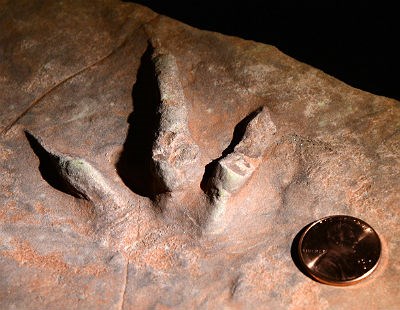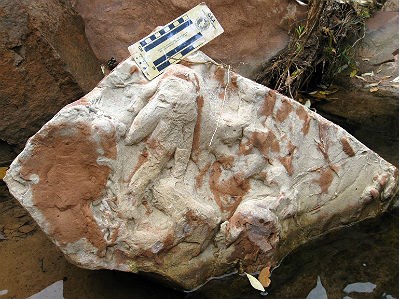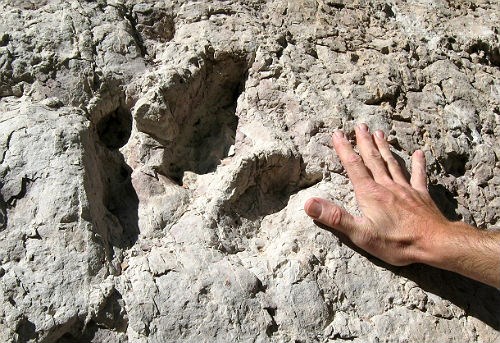
NPS photo / Scott Ireland Because fossilized dinosaur bones are usually not found along with the tracks, paleontologists give separate names to footprints and other trace fossils. Also, similar dinosaurs may leave nearly identical footprints, making it very difficult to determine the specific species of dinosaur.

NPS photo / David Tarailo The footprints found are of two distinct footprint types, both made by predatory dinosaurs walking upright on two legs.

Brad Wolverton/Utah Geological Survey 
NPS photo Dilophosaurus was approximately 20 feet long from nose to tip of tail, and weighed up to 1,000 pounds. The name "dilophosaurus" means "double-crested lizard" for the pair of crests on the top of its skull.

Brad Wolverton/Utah Geological Survey
Dinosaur tracks provide clues to behavior and paleo-environments. A recent discovery west of Zion contains dozens of parallel trackways heading in the same direction, indicating migratory behavior of several species of dinosaurs along an ancient lakeshore. The tracks helped confirm the presence of Lake Dixie that existed nearly 200 million-years ago. The St. George Dinosaur Discovery Site - a world-class tracksite - is the best place in the Zion region to see these dinosaur tracks.
|
Last updated: June 30, 2025
